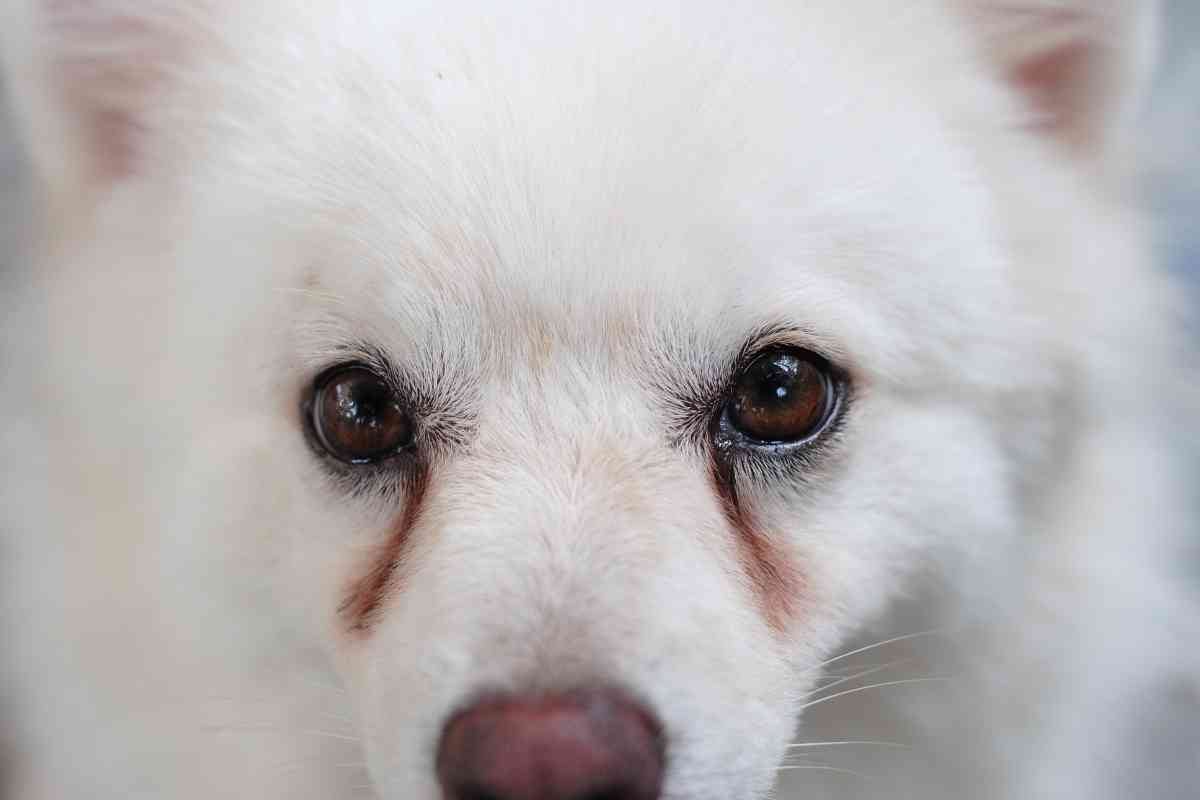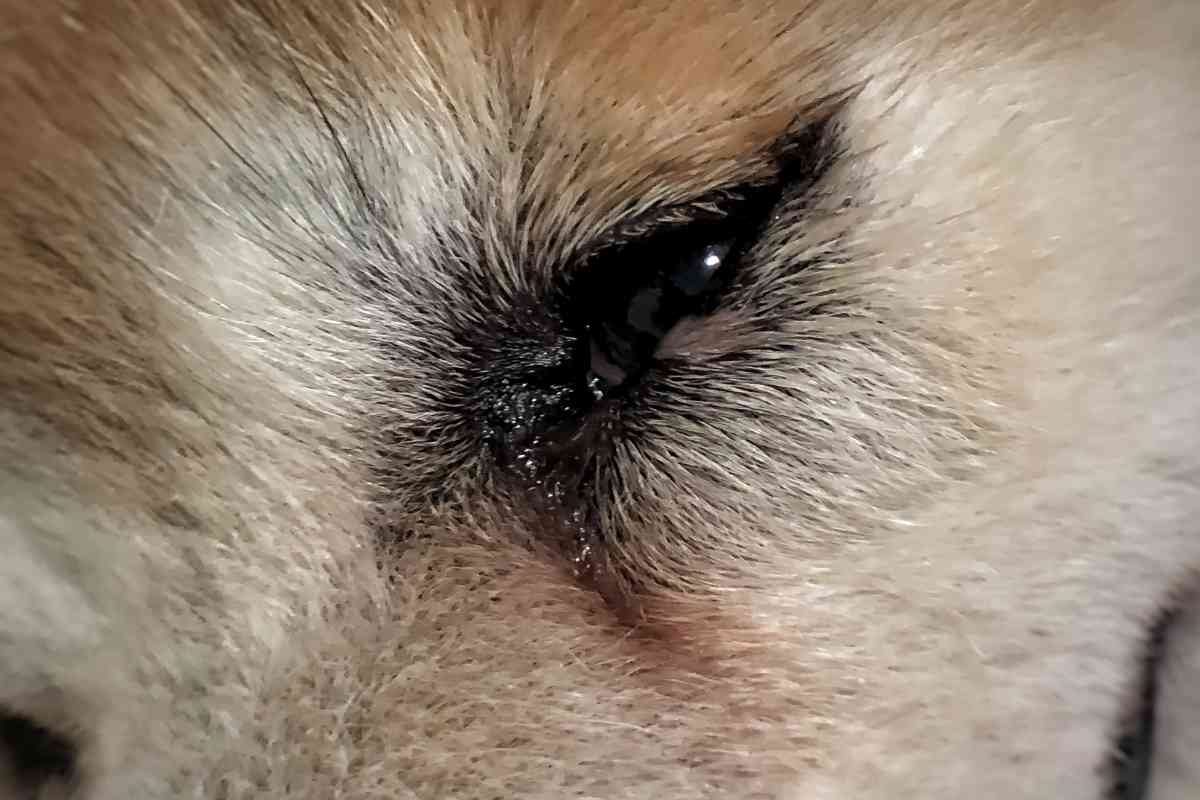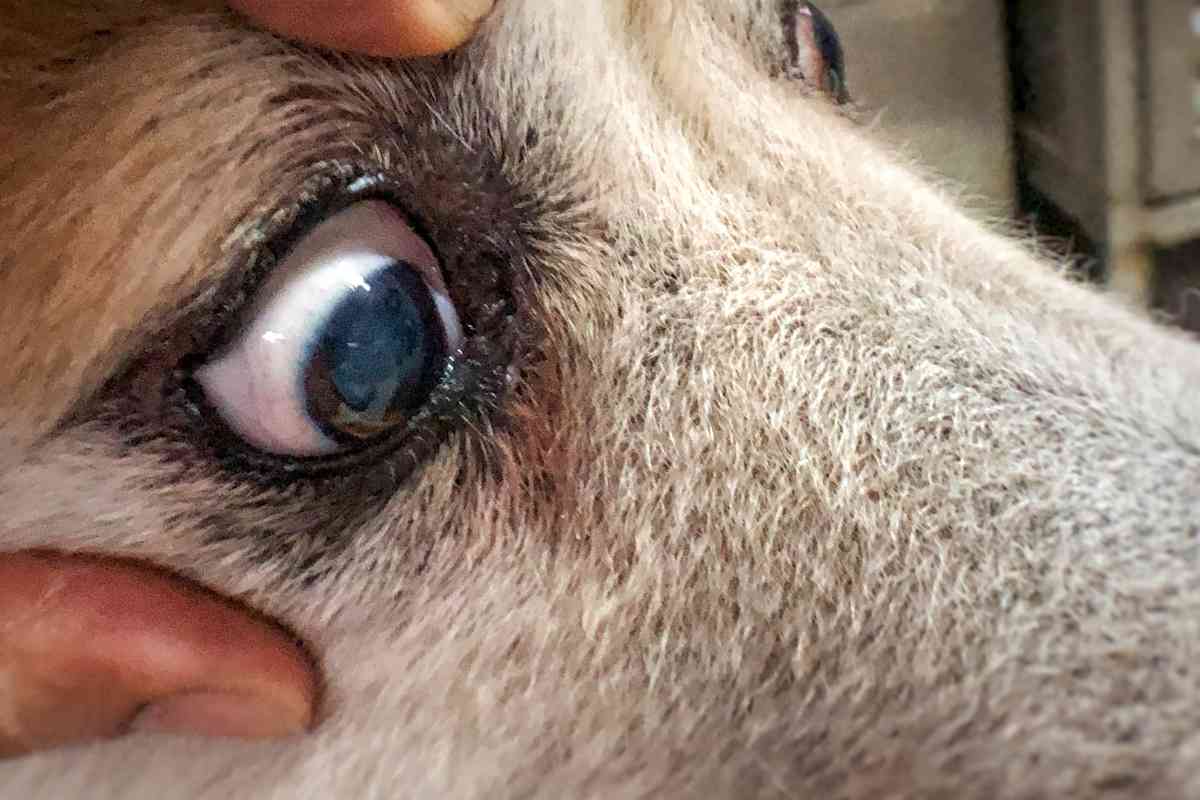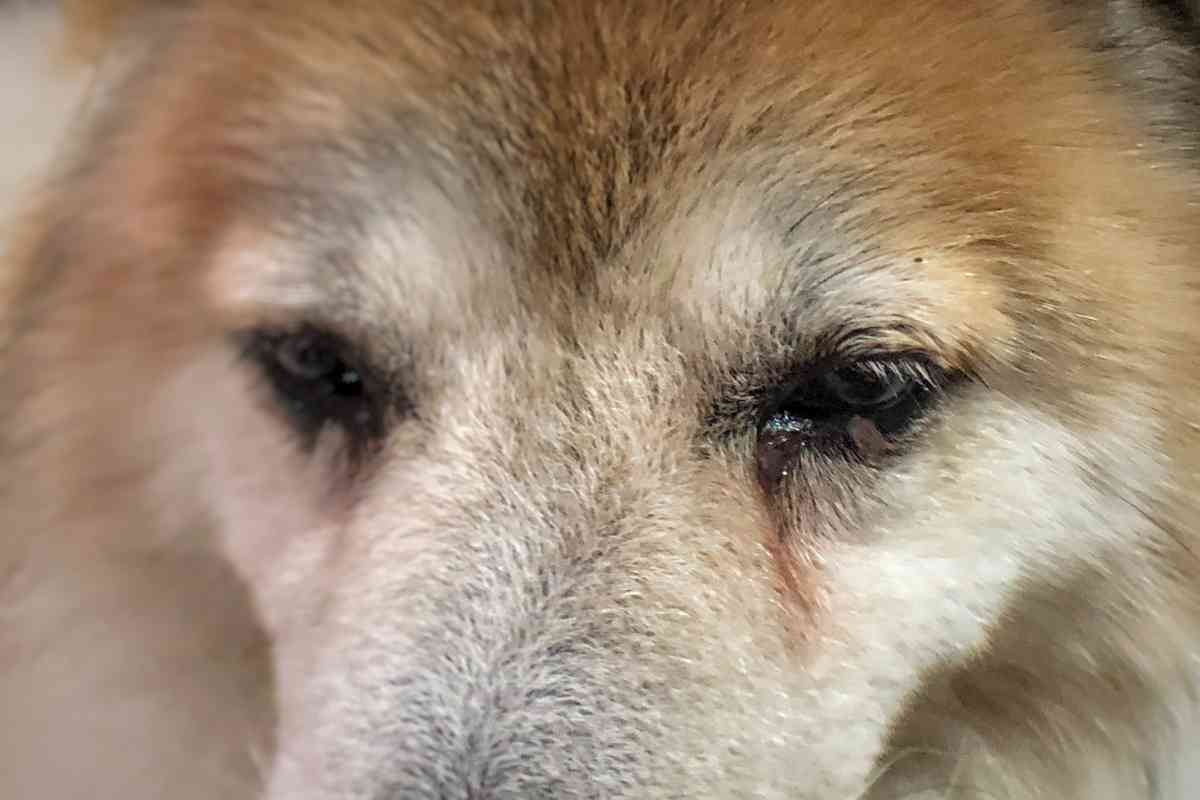5 Ways To Remove Dog Tear Stains Naturally At Home
.Almost every dog I’ve owned has had issues with dog tear stains, so it was important for me to find a way to remove dog tear stains naturally. Regular grooming didn’t remove the stains caused by their excessive tears from their tear ducts, and all the special wipes and fancy tear stain removers contained extra chemicals I just didn’t want to use, like antibiotics and other fillers.

How do you remove dog tear stains naturally?
You can remove dog tear stains naturally by applying small amounts of water, vinegar, coconut oil, hydrogen peroxide, or cleaning products with natural ingredients to the dog tear stains. Since natural cleaning solutions are relatively gentle, it may take some time to significantly remove stains.
I found that many of the chemicals sold on the market today contain abrasive ingredients that may be irritating or harmful to my dogs. I’ll tell you about safer and more natural ways I’ve removed dog tear stains.
What Are Dog Tear Stains?
These refer to tear stains on the dog’s face that are often triggered by too much tear production in a condition known as epiphora.
Under normal circumstances, the dog’s tears should drain through their eyelid, nasolacrimal duct, and eventually into the nose. But, unfortunately, sometimes, this duct is blocked and fails to develop as expected.
Consequently, the dog’s tears get backed up and eventually flow from their eyes. This tear residue ends up in the dog’s coat and is often seen as reddish-brown. In some cases, the tear stain appears rusty in color, usually caused by porphyrin, a waste by-product caused by the breakdown of the red blood cells.
It is easier to notice a tear stain in your dog if it has a lighter coat. This means breeds with lighter-colored coats are likely to have more conspicuous tear stains. Therefore, finding the best ways to clean these stains is essential.

What Causes Dog Tear Stains?
Experts suggest that dog tear stains are triggered or caused by various reasons. Note that all dogs are different, and causes may vary significantly. Some of the most common causes include.
Ingrown Eyelashes and Hair
The dog’s overgrown hair around the eyes could be the reason for the excessive tearing. This happens whenever this hair or eyelashes get caught in the tear ducts.
Allergies
Some dogs are susceptible to allergens from the environment. Something as simple as tap water or changes in weather or seasons can be a severe trigger leading to dog tears’ overproduction.
The Dog May Have Shallow Eye Sockets
The physical appearance of the dog can be a factor causing it to over-tear. For example, some dog breeds have a facial structure with sunken eye sockets and noses that are shorter than most. Such physical makeup can be a reason for excessive tearing in dogs.
When the Tear Drainage Holes are Blocked
Vets and breeders have revealed that this is often why most dogs tear. When the puncta (the drainage holes)get blocked due to a previous infection or excess scar tissue, there will be no proper draining of the dog’s tears. The dog’s tears flow outside, leaving behind tear marks on the fur.
Since some of the causes of tear stains are not controllable, it is up to the dog owner to ensure that the tears are not left uncleaned. Fortunately, most tear stains are manageable, especially when not linked to health conditions. However, stay alert and observe the color and odor of the tear stain.
For example, tear stains that appear to be more brownish than red and are mostly accompanied by a foul smell often indicate the presence of a yeast infection. In such cases, before taking any action, it is best to consult your dog’s vet. In addition, you must understand the specific causes behind the tear stain if you are to fix it appropriately.
Dog Tear Stain Remover Home Remedy: 5 Different Options
Though I’ve had some success with bottled cleaning products from pet stores, I’ve often been reluctant to use them since they might harm my dogs in the long run.
Artificial soaps and other unnatural cleaners can be damaging to a dog’s eyes and skin.
I tend to use solutions that are less abrasive and try to clean around their eyes too often in one day.
Regardless of the solution you use to remove your dog’s tear stains, you should first test to make sure they aren’t allergic or disgusted by anything you use to clean them.
Use Filtered Water To Remove Dog Tear Stains Naturally

One of the main things I use to naturally clean my dog’s tear stains is plain filtered water.
Filtered water usually won’t remove my dog’s tear stains in a short period of time, but with consistent use over several weeks, I can gradually notice the stains fade away.
Using plain filtered or distilled water has been a great way for me to clean my dog’s tear stains while also keeping them safe.
I feel good knowing the water won’t do any harm to their bodies the bottled cleaner might.
I don’t have to worry about my dog accidentally ingesting harmful ingredients in bottled cleaners.
Though natural cleaning solutions can be great, the effectiveness of the solutions largely depends on the particular dog and how they react to the solutions.
Use A Vinegar Solution To Remove Dog Tear Stains Naturally
The first natural cleaning solution I used on my dog was actually used on myself for health and wellness purposes.
Ever since I started trying to eat more healthily, I’ve been exploring different types of foods that can naturally resolve my digestive problems and clear up my skin.
I began using apple cider vinegar as a way to regulate my digestive system and to promote good bacteria in my gut.
While learning about the health benefits of apple cider vinegar, I learned that it can be a safe and effective cleaning solution.
Not only did I use apple cider vinegar to clean my skin, I actually found it strong enough to clean my entire bathroom.
Before you get too worried about wiping a bathroom cleaner around your dog’s eyes, you should know that apple cider vinegar must be diluted to make it less potent and more appropriate to be used on a dog.
As with many natural cleaning solutions, the delicate nature of the solutions often means we cannot expect them to clean a dog’s tear stains in a short period of time.
I found that as long as I’m careful and don’t use more than a 50-50 mix of water, I can usually use the mixture to clean my dog’s tear stains just fine.
You may need to adjust the apple cider vinegar mixture depending on how your dog reacts to the feel and smell of it.
It might be good to play it safe and start with less than 25% of vinegar to water and see how well that works for your dog.
When using an apple cider vinegar solution on your dog, you should start by using a very small diluted amount around their eyes to see if they are bothered by it.
If you notice anything wrong, you should stop using the solution or lower the amount until you can clean around their eyes without any adverse reactions.
Another great thing about apple cider vinegar is that you can add it to your dog’s food to help regulate their digestive system and build up protective acidity in their body.
Since apple cider vinegar can be beneficial to your dog’s overall health, it may help to reduce the amount of tears they produce.
If apple cider vinegar is too strong for your dog or is hard to find in your area, you can use white vinegar as a substitute for your cleaning mixture.
White vinegar is the common ingredient used for cooking and can be found in most major food stores.
When cleaning your dog’s tear stains ]with any kind of vinegar, you should only use a small bit on the tips of your fingers or use a cotton pad.
A cotton swab might also work since its small and sturdy tip could help to pinpoint some of the cleaning pressure.
You should avoid using a cotton ball or other cleaning materials that have loose fibers that can easily get stuck in your dog’s hair.
Use Coconut Oil For Dog Tear Stains
Another natural cleaning solution I use to clean my dog’s tear stains is coconut oil.
Although I read about using coconut oil for dogs online, I initially used coconut oil to help moisturize my skin.
Compared to vinegar, coconut oil is much less acidic and is less likely to bother your dog when it’s applied around their eyes.
On the downside, coconut oil will generally have less cleaning power than a vinegar-based solution.
If you’re looking for a safe and gentle natural solution to clean your dog’s tear stains, coconut oil is great since it’s also relatively safe if your dog ingests it.
Coconut oil is a natural antibacterial agent that can be used to clean skin and hair.
I’ve actually used coconut oil to promote hair growth since it can provide nutrients to my scalp to thicken hair and help it grow.
Along with using coconut oil to directly clean areas around your dog’s eyes, you can add a bit of coconut oil to your dog’s food or water to aid their digestive health.
I’ve noticed fewer instances of constipation and diarrhea with my dogs that were fed coconut oil.

How to Use Coconut Oil To Clean Dog Tear Stains
To prepare for applying coconut oil to your dog’s tear stains, gather the necessary supplies. Start by ensuring the area is dry, using wipes to remove moisture. Avoid wipes with alcohol to prevent irritation. If your dog allows it, trim the hair around the eye for easier application. Take caution not to harm your dog if they resist.
Prioritize your dog’s comfort before attempting to clean the stains. Spend some time cuddling with your dog until they relax.
Next, apply coconut oil by gently drying the hair around the eyes with a wipe and massaging the oil into the hair and skin. Ensure the stained area is covered and treat both eyes. If using your fingers, wash them beforehand to avoid introducing more bacteria. Alternatively, use a makeup pad or cotton cloth instead of cotton balls to prevent fur sticking.
After applying the coconut oil, reward your dog with a treat and gentle belly rub or petting. This positive experience will make future cleaning sessions more enjoyable for your dog.
Consistency is key for effectively eliminating tear stains. Apply coconut oil daily to the discolored spots, and if you forget, do it as soon as you remember. The treatment usually takes 10-14 days to show results, but this can vary based on the severity of the stains and how promptly you begin treatment. If there is no improvement after two weeks or if your dog’s eyes start watering unexpectedly, consult your vet.
Use Hydrogen Peroxide To Remove Dog Tear Stains Naturally
Though it might not be as natural as vinegar and oil, hydrogen peroxide is an eco-friendly solution I also use to remove dog tear stains.
Unlike apple cider vinegar and coconut oil, hydrogen peroxide should not be fed to your dog.
If your dog ingests hydrogen peroxide, it may cause him to get sick and vomit.
Hydrogen peroxide can be safe for removing dog tear stains if it is used with caution and in small amounts.
To use hydrogen peroxide to remove dog tear stains, you should use a small amount with a soft and non-fibrous material like a cotton pad.
You can also use your fingers to rub areas that might be hard to get to with a cleaning object.
Use A Natural Cleaning Product To Remove Dog Tear Stains Naturally

Another way I remove dog tear stains naturally is to use a cleaning product with natural ingredients.
Though many cleaning products contain synthetic ingredients that can be harmful to my dog, I’ve used many high-quality products with natural ingredients that have worked well to remove dog stains without hurting them.
You can use a bottled solution that contains ingredients like milk thistle, lavender, chamomile and other minimally-abrasive substances that are gentle on your dog.
Using a store-bought cleaning solution with natural ingredients can save you lots of time compared to using a home remedy solution.
I also really like the smell of many of these natural dog cleaners, which makes the entire cleaning process more enjoyable for me and my dog.
How Can I Prevent Dog Tear Stains Naturally?
I like to cut bunches of hair around my dog’s eyes to help reduce tear production and tear stains.
This is something that every dog owner should observe. Pay particular attention to the hair around the dog’s eye. The goal is to minimize the excess fur around the eye that could clump and trigger more tearing.
Reducing the presence of irritants in the air and surfaces around my dog has helped to block allergies that cause my dog’s eyes to tear up.
Preventing allergies and making sure my dog is clean has done wonders for reducing my dog’s tear stains.
I try to always pay close attention to my dog when it is in a park or dusty area and remove them as soon as I notice a high amount of tears in their eyes.
I also avoid giving my dog tap water or any water with high mineral content, which can cause dog tear stains.
You might also consider reducing your dog’s iron intake since iron can promote the production of tears.
Since beef has iron in it, reducing dog foods that contain beef could reduce their overall iron intake.
Since iron is part of a healthy dog’s diet, you shouldn’t completely remove iron from their diet.
I usually adjust my dog’s iron intake depending on how their tear production and stains look during the week.
If your dog is triggered by tap water, invest in filtered water for their bowl. Please pay attention to the allergic triggers and eliminate them where possible. Furthermore, tap water could cause more staining when the dog tears because it contains many more minerals than filtered water.
You should check with your dog’s veterinarian to make sure your dog doesn’t have any allergies or other issues that might increase tear production and cause tear stains.

Key Takeaways
- Gentle cleaning solutions like filtered water, vinegar, coconut oil, hydrogen peroxide, and cleaning products with natural ingredients can be used to remove dog tear stains naturally.
- To maximize the safety and effectiveness of using a natural cleaning solution, you should be consistent and aim to see noticeable results over a long period of time.
- You can take measures to prevent or reduce dog tear stains by feeding your dog a healthy diet and keeping them away from foods and substances that might promote the production of tears.